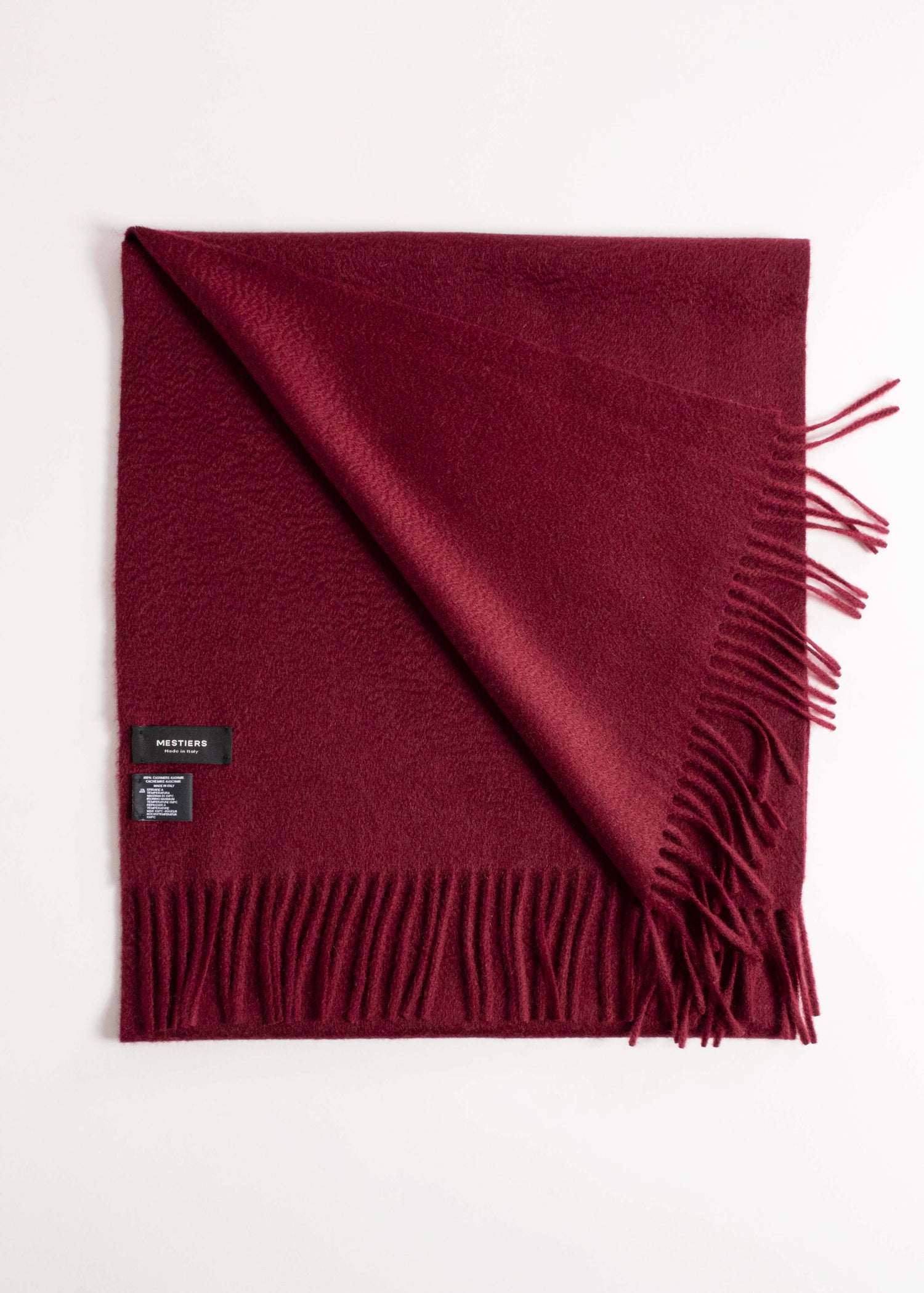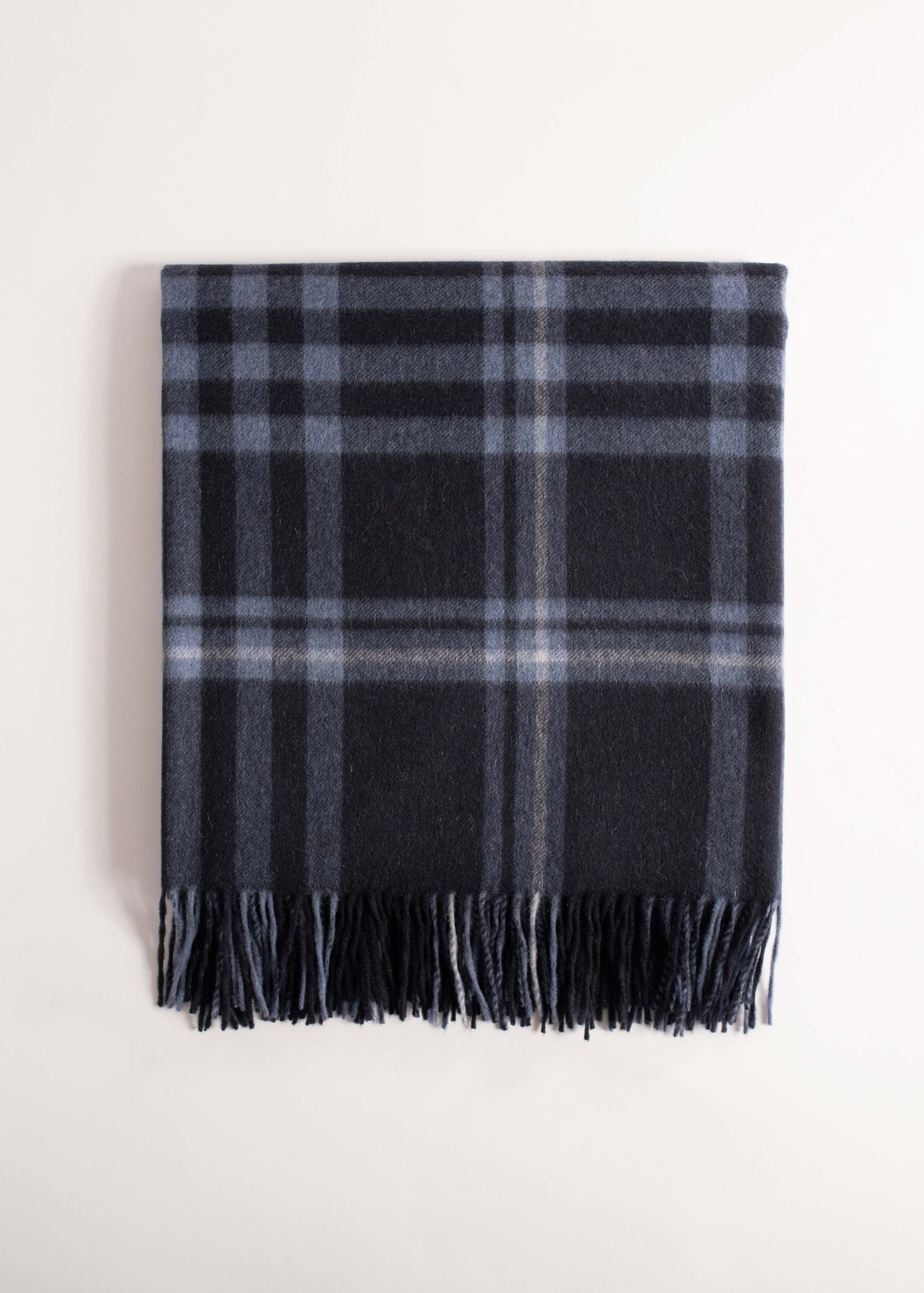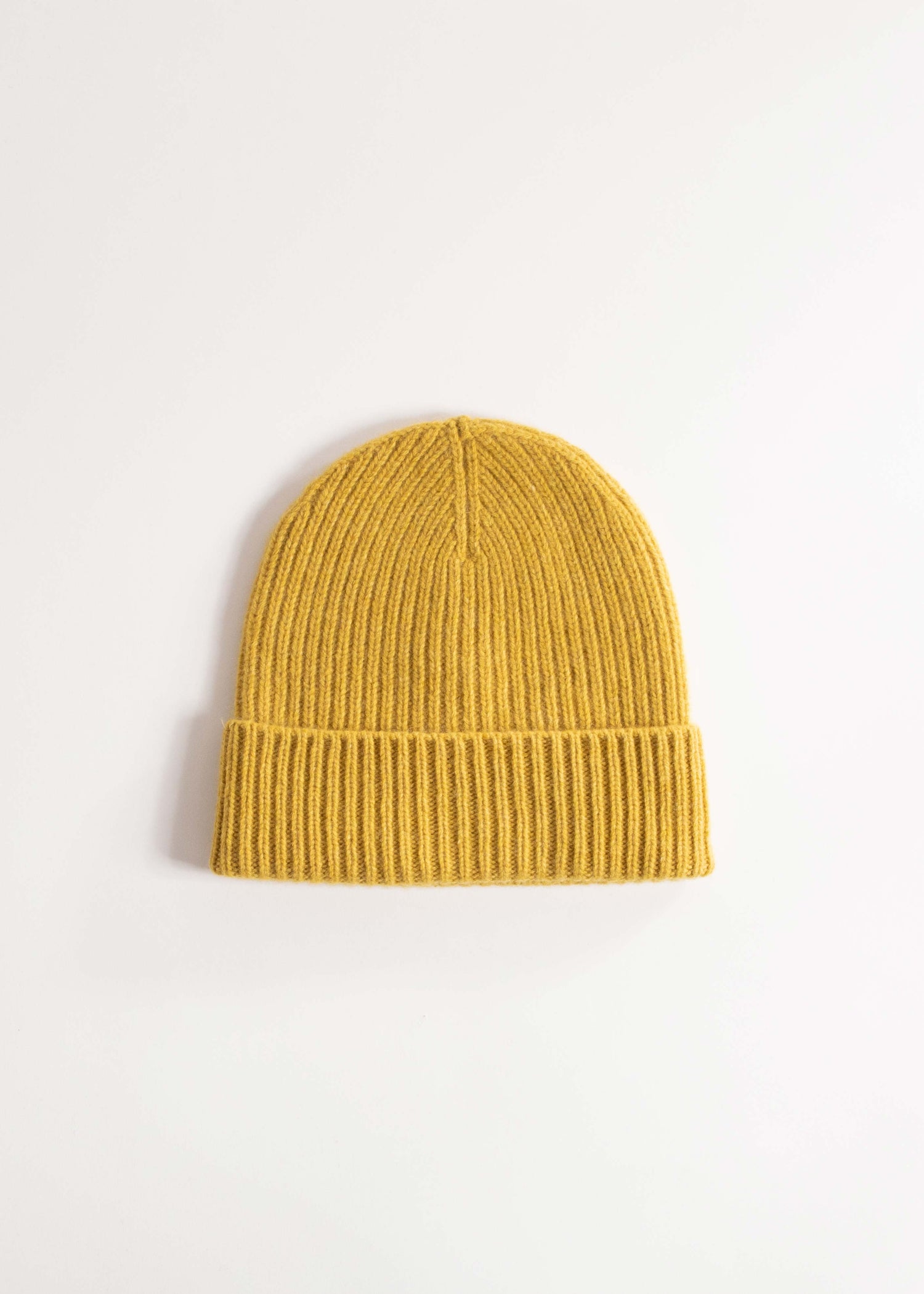
CASHMERE
The cashmere used in our knits, throws, and scarves comes from herds raised by nomadic tribes living on the high plateaus of Mongolia and Inner Mongolia — an autonomous region of China bordering Mongolia*. Every stage of the transformation of this precious fibre takes place in our spinning mill in Italy, where the yarn is then woven or knitted in specialized workshops, also located in Italy.
Cashmere – A High-Performance Wool
Cashmere is a natural animal fibre with exceptional properties. Incredibly soft, its long, fine fibres offer outstanding thermoregulation: they keep your skin cool in summer and act as a high-performance insulator in winter.
These remarkable qualities are directly linked to the breed of goat that produces the fibre — and to the extreme environment it calls home.
From Harsh Climates, Exceptional Fibre
Capra hircus laniger — the gentle Latin name for the cashmere goat — lives primarily on the high plateaus of Central Asia, north of the Himalayas, across much of the Gobi Desert. While also found in Iran, Afghanistan, and even Australia, it is in the Mongolian steppes — its native land — and the neighbouring Chinese plateaus that the goat produces the highest quality fibre.
A Climate of Extremes
Cashmere goats live in regions with dramatic temperature swings. Winters in their native habitat average -25°C (-13°F), with lows reaching -50°C (-58°F), while summers can climb beyond 35°C (95°F), peaking at 45°C (113°F). These extreme conditions have, over time, led to the development of an ultra-insulating undercoat for the cold months and a fine, breathable down that repels moisture during the summer heat.
A Gentle Harvest
In early spring, as temperatures begin to rise, cashmere goats naturally shed their heavy winter coat. This is when herders begin the careful, gradual harvest of this precious fibre. Using metal combs — never scissors or clippers — they delicately gather the fibres, which are then hand-sorted to separate the coarse outer hair from the fine inner down.
Like sheep and many other fleeced animals, cashmere goats produce two distinct types of fibre: the outer coat, known as “guard hair,” is rougher and serves as protection against the elements; beneath it lies the soft, fine, ultra-insulating undercoat — the finest grade of cashmere. This down is lighter in colour, closer to the skin, and prized for its quality.
Each goat yields less than 200 grams of usable cashmere per year, making it one of the rarest and most luxurious fibres in the world
The Expertise of Italian Artisans
The spinning mills we work with source their fibres directly from nomadic herders, without going through brokers or middlemen — ensuring full traceability. Only the longest and finest fibres are selected, guaranteeing exceptional, luxury-grade cashmere. This approach applies to all the materials we use in our textile pieces: we work exclusively with yarns spun from long, fine fibres. This is one of the key reasons behind the softness, durability, and refined comfort of our garments and accessories.
Once the raw cashmere arrives, the mill carries out every step: washing, combing, spinning, and dyeing. When working with such a noble material, each stage must be handled with precision and care.
The finished yarn is then sent to our weaving or knitting workshops, depending on the designs to be made. All processes happen in-house — never subcontracted, neither in Italy nor abroad. These are small, tightly run operations, typically with around forty highly skilled artisans, many of whom have honed their craft to meet the standards of the world’s leading luxury houses.
Less, but Better — Now More Than Ever
Or perhaps not at all. Today, the fashion market is flooded each winter with cashmere garments — even large retailers now include “100% cashmere” pieces in their collections. For under $95, or even $60 during sales, you can buy a sweater labelled as pure cashmere.
But at that price, and from those sources, the quality is — unsurprisingly — mediocre at best. You can feel it. The hand is rougher, the insulation less effective, the fibres pill more quickly, and the garment loses its shape and strength over time.
Once you understand the chain of reaction tied to the overproduction of cashmere, it's better to steer clear of what fast fashion has to offer.
How Can 100% Cashmere Be So Cheap?
As always, it’s the result of a long series of downward compromises — carried out with complete disregard for biodiversity.
And when we say “downward,” we mean it quite literally. The quality of cashmere is closely tied to environmental conditions — particularly the climate. Cashmere goats grow their precious, fine, long undercoat in response to cold, often extreme, temperatures. If the goats are moved to lower-altitude regions with milder climates, the quality of their fleece inevitably suffers.
As we've previously explained with merino wool, natural fibres are inherently terroir-based — they reflect the properties of the land. Some regions are simply better suited to producing exceptional fibres. While cashmere goats are also raised in countries like Iran, Afghanistan, or Australia, the finest fibres still come from the original regions: Mongolia and neighbouring parts of China. Unsurprisingly, that quality comes at a price.
Farming conditions matter greatly: the terrain, the goats’ freedom of movement, the quality of their feed, herd density, and stress reduction — all these factors influence the fibre’s characteristics and its cost.
Breeding for Yield, Not Quality
Faced with soaring demand, some herders have resorted to crossbreeding Capra hircus laniger with other goat breeds to increase fibre yield per animal. The result? A coarser, less refined fibre — but one that costs less to produce.
The same goes for the harvesting method. Traditional combing and hand-sorting are slow, careful processes. Using shears or electric clippers is far faster and significantly cheaper, but it compromises the quality of the fibre.
From Fibre to Factory: The Industrial Shortcuts
Once harvested, the raw fibre is typically shipped to large-scale spinning and garment factories in China or Vietnam — places where transparency around labour conditions and environmental standards remains elusive.
This is how the mass-market textile industry produces ultra-cheap cashmere. And the environmental consequences are devastating.
The Environmental Consequences
Take Mongolia, for example: the goat population has more than doubled in just 20 years, all within the same territory. The consequence? Overgrazing, leading to desertification. The land simply can’t regenerate fast enough, as the goats graze plants down to the root. This desertification progresses year after year, worsened by global warming.
Cashmere Recycling: A Solution?
In Tuscany’s textile hub, several spinning mills have pioneered the production of recycled cashmere yarn. But how is this yarn made?
These mills receive bales of used cashmere garments, mostly from the United States, a country with a high demand for the material. The first step is sorting these garments by colour, done manually by expert textile workers known as cenciaioli. They can identify different fibres just by touch. If there’s any doubt, they rely on labels or perform tests — such as tearing the fabric. If it resists tearing, synthetic fibres are likely involved. Another test involves burning a small piece of fabric. If it gives off the smell of burnt plastic with blackened edges, synthetic fibres are present. If it smells like burnt hair and the flame doesn’t spread, the fibre is wool or cashmere.
Once sorted, the garments are cut into pieces, removing all accessories like zippers, buttons, and labels. These pieces are then fed into a machine that shreds them before grinding the fabric into a fluff. This fluff is mixed with new cashmere in a ratio of about 60% old fibre and 40% new. The resulting blend is then spun, washed, combed, and dyed like any regular yarn.
The Pros and Cons of Cashmere Recycling
The Benefits: Recycling cashmere offers a significant reduction in ecological impact. It cuts water and energy consumption by over 60% and reduces CO2 emissions by more than 80%.
The drawback: However, recycled cashmere, made from multiple garments, will likely not match the quality or performance of high-grade virgin cashmere. To approach that level of quality, the garments being recycled would need to be carefully selected based on their original quality, in addition to the other sorting processes. This raises another question: as the global textile industry continues to lower its standards, the quality of second-hand garments — and therefore recycled fibres — will inevitably decline. The quality of recycled fibres largely depends on our choices today.
But in any case, a recycled cashmere yarn is always a better option than a new cashmere piece from fast fashion. That much is certain.
Cashmere: A Luxury Product
High-quality cashmere now represents a small percentage of global production. Its rarity explains its high cost and the need to process it in qualified facilities that respect and reveal its extraordinary properties.
For all the reasons mentioned above, it is important to carefully choose your cashmere pieces and to maintain them properly so that they can last for many years. We detail all the care tips for preserving your precious cashmere in our comprehensive maintenance guide.
For wool that lasts – The importance of proper care
Taking good care of your pieces is essential to ensure their longevity, they’re made to last a lifetime. Here are all our care tips to help you preserve the beauty of your wool.






